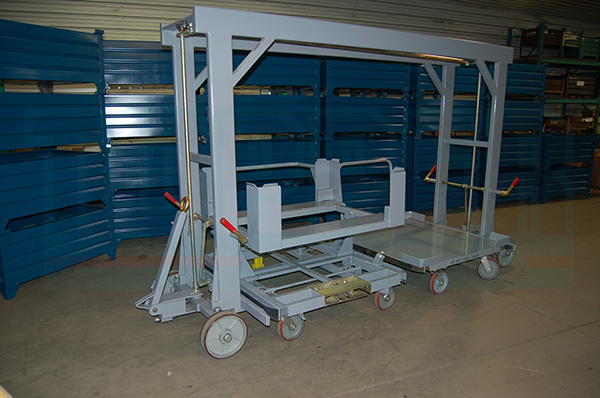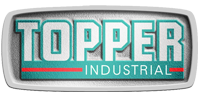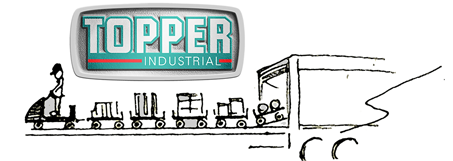James Skyrm, Lean & Continuous Improvement Engineer at Poclain Hydraulics shared that their company designs, manufactures, and markets hydrostatic transmissions. “Our markets are off-road, on-road and industrial applications. We are a French family-owned company with eleven plants around the world, spanning three continents to better serve our customers. The North American facility is located 30 minutes south of Milwaukee WI, where we provide sales, R&D, manufacturing services.
James is now the father of toddler twins; he started with the company about ten years ago in France; worked there for a number of years, worked in India for several years, then returned to Wisconsin about five years ago in 2012. Since that time, he has served in his current role leading the company’s lean manufacturing program.
Enter Topper Industrial Carts and Going Truck Free
Topper Industrial founder, Ed Brown, showed James several different industrial carts to determine what would be most lean and effective. According to James, Poclain used about 90 different carts, seven different types of carts, including the world class Topper Mother-Daughter system pulled by tugger carts. James added, “We use some specific ergonomic applications of carts for specific lines dedicated for specific products.”

Poclain decided to go to the fork free route, which does not mean entirely fork truck free. James noted, “Fork trucks do a great job of going vertical. We don’t have the surface area in our plant to get away from vertical storage; we still have to load and unload trucks to our customers. That’s where fork truck equipment excels. But in terms of translating product across of the shop floor, there were some inefficiencies before Topper.”
Poclain dug a little deeper and investigated their value stream maps. James shared that the company had been working with some former leading automotive industry management. A few years ago, a plant manager told James that fork trucks were the most dangerous and inefficient pieces of equipment on the shop floor.
James Skyrm, Lean & CI Engineer at Poclain Hydraulics
James was skeptical at first, noting, “I didn’t believe it. We had fork trucks all over our plant and we didn’t know any differently than that, to be honest. And then as we went through a lean journey, we soon realized that there was a lot of waste in our internal logistics flow and opportunities for safety improvements. Some of these things brought to mind the former plant manager’s statement over and over again. I begin to realize I needed to dig into this; there may be some truth to this.”
Back to 2015, Poclain’s logistics team began to dig. They began to investigate into some OSHA (Office of Health and Safety Administration) statistics; they also looked into the National Truck Association statistics – of the 900,000 trucks that are out there, in a given year, NTSA (National Transportation Safety Administration) estimates that 11 percent of these trucks will be involved in some kind of accident on a shop floor. If the average life of a truck, according to statistics, is about eight years, there is a 90 percent chance a truck you see on the shop floor will be involved in some type of accident. This was eye-opening to James because Poclain had a lot of fork trucks running around.
In addition to that, people don’t like to talk about fatalities, but fatalities that occur 47 percent in manufacturing — 92 percent of them are due to fork truck accidents according to OSHA statistics. The bright young father of toddler twins ran the numbers on the OSHA calculator for what they cost – and the potential costs were staggering. Going Fork Free where possible became the obvious choice.

Information submitted by Jillian Burrow, Marketing Manager for Topper Industrial


No Comments Yet!
You can be first to comment this post!